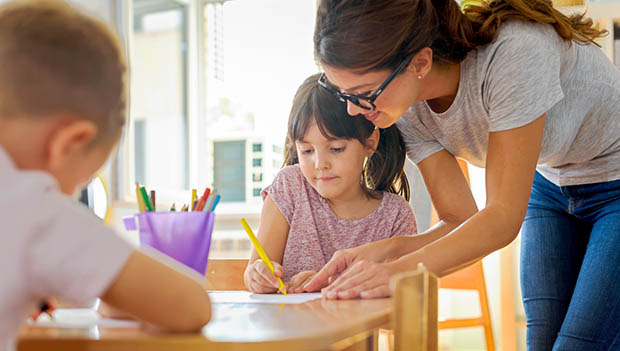
Fostering a love of school and learning early in your child's education will help them far beyond their elementary years. Their love for the comfort and support of "home" can help inform their love of school—which will ultimately help them thrive in both environments.
At the end of the day, teacher-parent communication is about a home-school connection. From establishing a good method of contact with your child's teacher early in the year to helping maintain a two-way communication all year long, fostering good communication between home and school can boost support, growth, learning and your child's opportunity for success.
Best Method of Contact
Whether through email, phone, in-person meetings or the latest communication app, everyone has a way in which its best to get a hold of them. Most teachers communicate this to parents in the first weeks of school or at "back to school" night, but if you're not sure, it always helps to ask.
Knowing the best way to contact your child's teacher will minimize any hesitation or confusion when it comes to reaching out about a question, concern or update. At the same time, if you're one who doesn't use the latest app or aren't email savvy, make sure you communicate with the teacher early on to find a way to keep in touch that works for both of you.
Best Time for Conversation
If you're looking to reach your child's teacher for a longer conversation (more than a quick note to keep them in the loop or ask a simple question), you'll want to know when they're most easily accessible by phone. For most teachers, this is either before or after school, but timeframes and preferences vary.
Again, it always helps to ask, and doing so will help you and your child's teacher establish the boundaries that work best for both of you while doing everything you can to bridge the gap between home and school to best support your student.
Goal-Setting
The beginning of the year is the perfect time to share your insights on your child's strengths and weaknesses with their teacher. What books does your child enjoy reading? What projects and goals are they excited/working toward? What are some things you would love to see them try, do or work toward?
These are all things that, if shared with your child's teacher early in the year, can help them shape and structure any individual instruction/enrichment opportunities for your child. Additionally, this will give the teacher an opportunity to share anything they have pre-planned with you and your student to get you excited about the year ahead.
Share At-Home Struggles
From not getting enough sleep the night before school to processing any big change or challenge in personal/family life, keeping your child's teacher informed of anything your child is processing or dealing with (in vague or specific terms) will always help them to be better equipped in supporting them while in the classroom.
Any upset to a child's at-home routine that might affect their concentration, focus, motivation or behavior should be shared with their teacher, as this will better equip them to interpret and respond to your child's needs.
This could include things such as a big move, the health of a close friend/family member or shifts in familial roles. Again, vague or specific terms will suffice, but sharing when your child might be processing or dealing with a shift in daily routine can only help provide them with more support.
Spotlight At-Home Success
While your child's teacher is busy tracking and charting their academic goals, it will make a big difference to both them and your student to keep them informed of the accolades and achievements your child is earning at home. This might include athletic and artistic achievements or strides made toward at-home goals.
Sharing these with your child's teacher will not just earn your child another moment to shine, but also help bridge the gap between home and school.
Be Present (Literally!) if Possible
One of the best ways to bridge the gap between home and school is to physically be there—not just at back-to-school night and open houses, but during the day when the routine and structure that your child experiences on a daily basis is in full swing.
If it's at all possible for you to volunteer your time in the classroom (especially during the primary grade years), your child, their teacher and you are all likely to benefit. Consider it like the opposite of "take your child to work day." Your child will get to show you around and introduce you to their friends, and you'll have a perspective on the stories both your child and your child's teacher share with you that you wouldn't otherwise have.
It's not a daily or weekly volunteer need—even once or twice a year will do—and it can make a world of difference.
Addressing Concerns
Long story short, it's a parent's job to advocate for their child. The goal is always for parents and teachers work as a team (remember that teachers have an entire classroom of personalities to manage), but this can only happen when communication is positive, encouraging and constructive. Issues and concerns are bound to surface even in the best of circumstances, and rather than sweep them under the rug, it's always favorable to share them with your child's teacher.
How?
Simply start with something that's positive or working well, then share your concern. This keeps everyone away from a defensive stance and working constructively. More often than not (and regardless of the best method for contact), the best way to discuss concerns is typically in-person, so reach out and schedule a meeting.
READ THIS NEXT: 12 Essential Questions to Ask Your Child's New Teacher









Discuss This Article